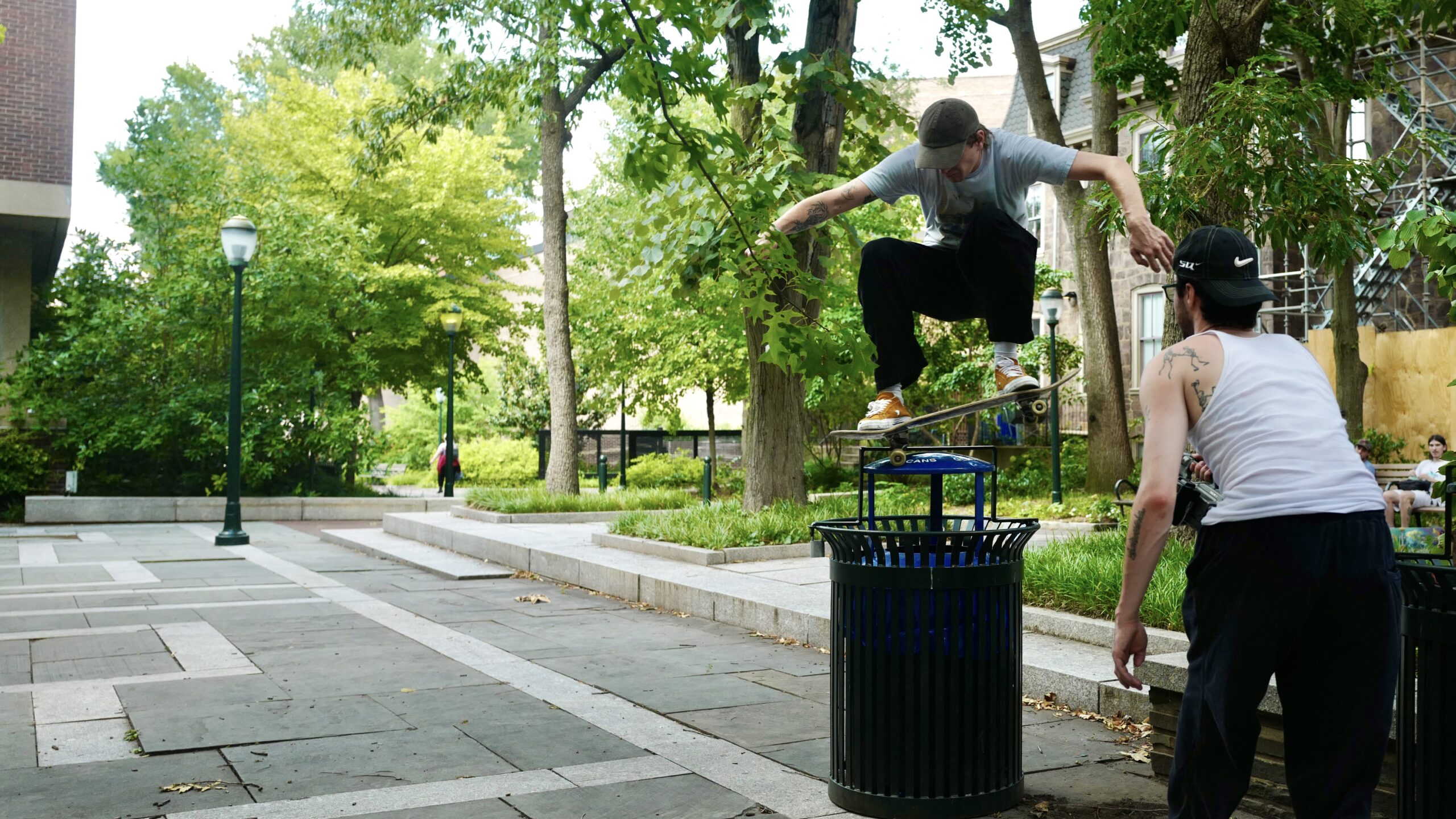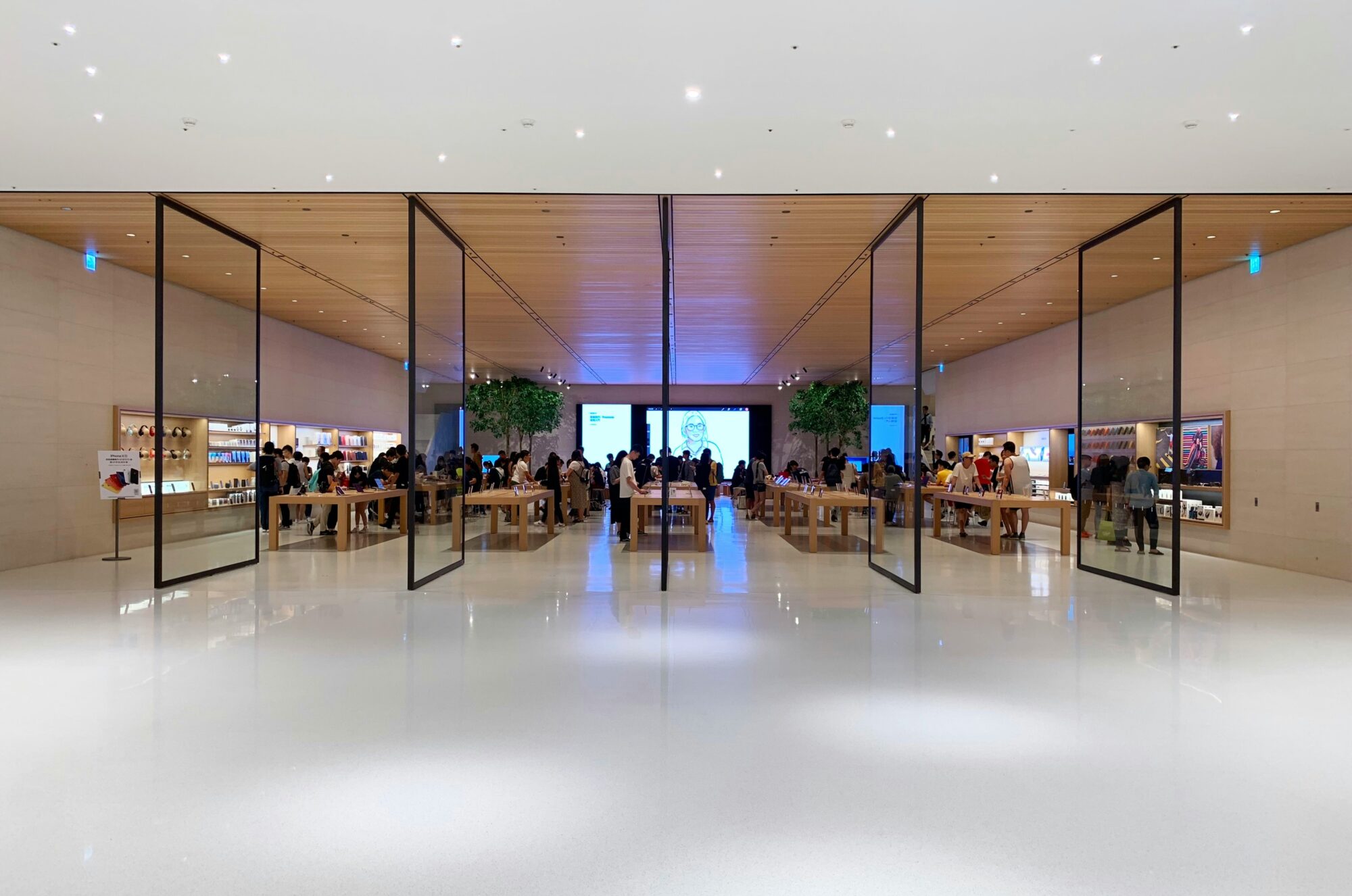

In A Post-AI World, Who Are You Building For?

What’s the best toilet paper to buy? Two ply? Soft? Environmentally friendly?
Does thinking about this bring you joy? Or is it something you think about once a year (if that) and then just order the same thing over and over again? You might not even remember the brand you decided to buy. You just keep buying it over and over, like an automaton.
Automaton? Do you mean agent?
Yes, you do. Because your agent will be buying your toilet paper, and all the other random utilitarian things you need. Toothpaste, soap, razor blades, dishwashing liquid. You won’t even have to set up a recurring order that you sometimes have to pause when you go on vacation. Your agent will place the order for you, just before you need it, always ensuring you get the best price (if that matters to you).
We are speeding toward a world in which agents are involved in most buying decisions. Some transactions will be entirely automated. Others will be more of a collaboration between agents and humans.
What types of transactions will be the most resistant to this automation?
- Expensive things for consumers.
- Things that are sold via fun/entertaining shopping experiences: online auctions, online video shopping, offline cool stores.
- Things that bring you joy or define you: clothes, some food, decor, jewelry, handbags, throw pillows, eye glasses, books, games, specialty coffee, mechanical keyboards.
In these cases, people will want to stay more involved in the buying experience. But even there, we may see agents within the curation process or the actual buying process (e.g. an agent places a bid in an online auction just in time to win the item).
If you’re a founder who is selling a product, you need to think about whether you’re selling primarily to an agent or a human being. Agents’ power over transactions will affect your product and GTM strategy.
Some companies will soon be selling primarily to agents. Are you one of them? If so, you need to know how those decisions will be made. Which vector will they be optimizing around? Price? Delivery time? Quality or durability (as understood from online reviews)? This article by Tina He describes some of the factors to think about when designing for agents:
“An AI agent… analyzes its underlying data by looking for “machine-readable structure,” such as specific product names like “Brand X Trailblazer Boot”; key features, such as “waterproof” and “ankle support”; and categorizations like “hiking,” “outdoor gear,” and “footwear.”
Several purchase types will be resistant to this automation. For these purchases, you want to make it as entertaining to shop for as possible. This is what will ensure humans will keep coming back. There’s already been an ongoing trend that merges shopping with entertainment. Platforms like whatnot, palmstreet, and TalkShopLive are examples that are relevant today.
But even in these categories, you’ll STILL have to adapt to agents. Because the agents are the ones who will bring the humans to your site.
This is a brave new world. Go forth and serve your agent overlords. 😉

Beginner’s Mind

Recently, someone told me that he wanted to work in a different field. But doing what he wanted would require him to “start over” and work back up to a place of expertise.
I could feel and hear the resistance and fear.
Why wasn’t he pursuing his dream?
Because he would have to start as a beginner. Again.
I’ve felt that, too. It was when I first started graduate film school. I was in my 30s and I had just stopped being a VP at eBay to pursue this totally different track. Most of my classmates were in their 20s. We were all beginners. But I felt like I was even more of a beginner than they were. I hadn’t been steeped in creating art for years.
I was drinking from a firehose. Every day was filled with wonder, learning, curiosity. And often, frustration.
A lot of the frustration came from the beginner’s gap between taste and capability (Ira Glass). You have good taste. But your execution sucks. Your capability doesn’t rise to the standards of your own taste. I faced that constantly, starting with the first shooting exercise. I felt embarrassed when I screened it.
For my next effort, I asked one of my classmates to be my cinematographer. I explained how I wanted it to look and feel. And he just… did it! His simple choices created the visual effect I wanted. It was a big a-ha moment for me. I understood the visual language in a new way.
Fifteen years later, I still remember when I realized there was a way to get across the gap between my good taste and my bad execution. I had to learn the language of the camera. I had to be willing to admit I didn’t know—to myself (painful) and to others (also painful). I had to open myself to truly learning (freeing), and then absorb everything I could (exciting).
To get there, I had to detach from my previous know-how, credentials, and expertise. I had to acknowledge that I didn’t know, that I wasn’t good yet, and that I had to work hard to learn the skills to deliver the film I saw in my head.
My sense is that the same thing is true for startup CEOs. You need a fresh perspective on the industry to be able to see how things can be done better. And you also need to have the humility of a beginner in building the business to find the things that will close the gap between your taste and your execution. It requires you to be humble and detach yourself from all of the things you’ve accomplished so far.
This is especially true when you are doing things no one has ever done — with no experts to consult and no roadmap to follow.
For example, Andre Haddad joined Turo (then known as RelayRides) as their CEO in 2012. He came to Turo with deep marketplace expertise — he was a founder of iBazaar which was acquired by eBay, ran design and then product at eBay, and was CEO of Shopping.com. But Turo was different in some key ways.
Turo had a completely new concept: monetizing your car by allowing others to use it while you were not using it. This meant that Turo was unlike other marketplaces where finding supply isn’t a huge issue. At Turo, it took fresh thinking to find a supply of cars and teach the hosts new behaviors.
Turo also needed insurance. No insurer had ever insured a marketplace for car sharing before. That required data. But in order to get the data, Turo needed insurance. Chicken and egg.
Andre’s previous marketplace experience wasn’t that useful to Turo’s specific problems. He had to get creative. He ended up radically over-paying for insurance in the short term—paying more in insurance premiums than Turo’s whole marketplace gross booking value (GBV). But he knew that he would only have to do this until they collected enough data to allow the actuaries to price the risk correctly.
Both of these were new problems that Andre encountered at the frontier. There was no playbook. There was no previous mastery to lean on. He had to accept the reality of being a beginner.
Andre tries to learn a new skill every decade. He uses this as a forcing function to put himself into a beginner’s mindset and grapple with what that entails. I love this concept. Here’s what beginner’s mind means to me:
- Unafraid of failure.
- Willing to appear (and be considered) incompetent.
- Eager to learn from others, and seek advice and help.
- Comfortable measuring your performance against own personal best, not based on an external metric.
- Excited when you discover you don’t know something (because now, you will learn).
- Low/no ego to maximize learning and growth.
Painful at the start, but useful.

It Never Gets Easier

It’s normal human behavior to think “if only X happened, then everything would be so much better.”
In the startup world, these statements are usually around the next round of funding:
- fundraising/runway – if only I raised the A, then everything would be so much better
- winning a key contract – if only we had a fortune 500 client, then everything would be so much better
- growth and hiring – if only we had the CRO in place…
When you are a seed stage company, you think life would be so awesome if you only get to Series A and have more money in the bank. Before product market fit, you yearn for product market fit and imagine how amazing life would be (even though PMF is not permanent).
Much like in life, even when the desired outcome happens, it’s not so much better. Or maybe it is, but only for a brief period. Then we adjust to the new normal and our emotional status reverts back. And whatever that new normal is, it is not the “so much better” place we had imagined.
I appreciate that some of these desires touch on the existential. Closing the next round of funding seems to remove the existential risk you face. But… it really doesn’t. It just kicks the can down the road. X rounds of funding does not guarantee the X+1 round of funding.
The new normal is not awesome. It may not be so much better.
It is only different.
As you grow from 5 people to 15, it’s a very different world. From 15 to 100, even more different. The problems change, the challenges change, but it may always be existential.
This is the fact anyone in business has to get comfortable with. Large public companies have major challenges. Often existential challenges. Just look at Intel. There are public companies that are in “turnaround” mode, where things were going great—but then, for a whole bunch of reasons, they were not going great and it was existential. Now (usually new) management is trying to turn the company around.
When a startup is smaller, the existential risk is immediate. You can go from functioning to shut down in 30 days. For large public companies, the existential risk may span decades, but there are, in fact, public companies out there that are slowly dying. Just like great companies can lose their trajectory and mojo, companies can be turned around and made great again. It’s hard.
Nothing is ever easy. It’s always challenging. The scale and scope of challenges change, but challenges themselves never go away. It will never be calm and problem-free. Ever.
To paraphrase Sam Harris, dealing with the challenges *is* the living of life. The same is true of business. Business involves the constant dealing with new challenges. The sooner you learn to accept it, or even love it, the sooner it will be less painful and more just the norm. Because doing the difficult challenging stuff is what building and managing a business is all about.
It never gets easier. But your perspective changes. The fact that you love the challenge makes it hit differently. Perhaps it can even become… normal?

Focus on the Feeling

When I finally read this “Taste Is Eating Silicon Valley” post, it reminded me of some notes I had made a year ago under the heading of “Focus on the feeling.” A slightly different take on the same big-picture theme —>
When I watch a film, I focus on the feeling: how do all those elements come together to make the viewer feel?
Functionality (plot, dialogue, acting, costume, camera angles, lighting, locations) matters. But that’s table stakes. There’s a big difference between a synopsis that you could read on IMDb and a film that’s complete with the things that makes the story come alive.
The nuances of the execution of the film matter. It’s in the little details that define the character and the world, the scenes that release tension and make you laugh (even in a tragic story), and how the viewer is carried along on the journey.
A good film doesn’t have to twist your arm to carry you along.
During some films, I feel light, hopeful, filled with possibility. For the protagonist, and also about the world. After some films, the weight of the film stays with me. I leave thoughtful, aware, and perhaps a little sad.
Tech products can have the same effect. In 2013, I used HipChat to communicate internally. It was fine. It was functionally complete and did everything we needed it to do. And then Slack came out. The functionality of HipChat and Slack were so similar, and HipChat had an entrenched user base. Why, then, did Slack pull away and take the lead?
It was the choice of color, fonts, and interaction elements that created these “feelings.” When I tried Slack, it made me feel light, happy, less stressed. HipChat, in comparison, felt formal, almost stifling with blues and grays. There were also key product decisions on how you could start using Slack (easily), and onboard your colleagues (easily) that were heavy contributors. But, in order to even want to use it and get your colleagues to use it, you first had to fall in love with it. And love it enough to get everyone to move to a new platform. The feeling of joy and lightness was so significant that it caused mass adoption of Slack and mass abandonment of HipChat.
A good product doesn’t have to twist your arm to carry you along.
Same goes for the Apple Store vs. Best Buy. One draws me in, encourages me to be in my own bubble (even if the store is crowded), and look at and explore delightfully beautiful products. The other feels cluttered and overwhelming, even if it’s empty of visitors—and even if they’re also selling Macs and iPhones. Instead of products, I get to see aisle after aisle of boxes – a well-lit warehouse. Even the shelves – ugh – such a lack of care for the products they display. It’s an experience I avoid if I have a choice. These feelings of drawing in and repelling are a huge part of the design and care (or lack thereof) that each retailer has chosen.
Another example is Turo1 versus airport-based car rentals. With Turo, you rent a car from a real car owner, you know exactly what the car will be, you meet the person who owns the car, and you have a warm, more-personal experience of delight for a car you actually want to drive. Turo focuses on the feeling, through the design of the customer experience from booking, to delivery, to the rules around having to clean the car (you don’t!), to return.
You want your customer feeling: That was awesome! Now I’m in a good mood. It makes me lean forward and want to do this again. Behind that feeling are the many careful decisions that make the process delightful.
In tech, there is a big difference between the functionality—”allowing users to communicate inside an organization”—and the details of how they do it, the feeling they get when they’re onboarded, the joy of a shared gif that gets the “room” laughing.
Focusing on the feeling is what will truly separate the winners.
Disclosure: I am an independent director on the board of Turo. ↩

You Are The One

There’s a lot they don’t tell you when you start film school.
They don’t tell you the percentage of film school students who end up directing their own feature (it’s <1%).
They don’t tell you how much directors make (usually <$80,000). Most directors, even cult idols like Todd Solondz, have to teach or work in another area to pay their bills.
They don’t tell you that the industry is teeming with gatekeepers, and there’s red tape everywhere.
They don’t tell you how much money you’ll need to make a real film, or that you need to be a very persuasive salesperson to raise that money—not to mention all the other skills you’ve got to have, including technical skills, teamwork, leadership, public speaking, and the ability to express a vision for something that doesn’t exist yet.
In the process, there will be times when your bank balance is in the single digits, you’re doing gig jobs to pay rent, you’re getting rejected every week and dealing with your hopes getting crushed, but having to persevere, perhaps getting sued over who owns an idea, and all manner of other setbacks. You want to share your stories, but you don’t want to be considered a whiner. You can’t complain to the rare friend who is doing well, and you can’t really talk to anyone not in the industry because they don’t get how hard it is. Your relationships can sometimes help you, but they’re likely to suffer while you (and maybe your partner) go through the rollercoaster. You’ll have to balance the projects you’re passionate about with the ones that will pay the bills. Most directors face countless obstacles and bumps during their careers that can easily topple a person.
Going in, everyone thinks: “I am the exception; I am the one.”
And here’s the contradiction — you have to think that. Beneath all the doubt and the bruises of survival, you have to truly believe that. And you have to hold on to that (at times) delusional self-belief if you’re going to have any chance at all of making it.
Same goes for startups. No one tells you:
- They don’t tell you the percentage of startups that actually succeed: <10%.
- Most entrepreneurs have to shut down their companies, lay off founding team members, shift their vision radically, or merge with a bigger company down the road.
- You’ll have to balance the mission you’re passionate about with the business model that pays the bills.
- The startup world, too, is full of gatekeepers and red tape.
- To build a real company, you need to be a persuasive salesperson, along with all the other skills you need to have, including technical skills, teamwork, leadership, public speaking, and the ability to express a vision for something that doesn’t exist yet.
- In the process, you’ll risk all manner of other setbacks, and on top of it all, most founders face countless obstacles and bumps during their careers that can easily take you down mentally.
But going in, everyone thinks they’ll be the one—and they should.
That’s the only way to stand a chance of succeeding. You have to believe you can navigate through the challenges, and at every turn, you have to make the right decision for the long term. And it is a long road, so you need your belief in your mission, combined with the ability to execute. You need the ability to survive a global pandemic and a complete turnaround in the venture market (forget growth at all costs, get those gross margins up, get to profitability). All the while still believing in yourself, believing that you are the one.
Advice is cheap.
The only way is to go off and be the one.